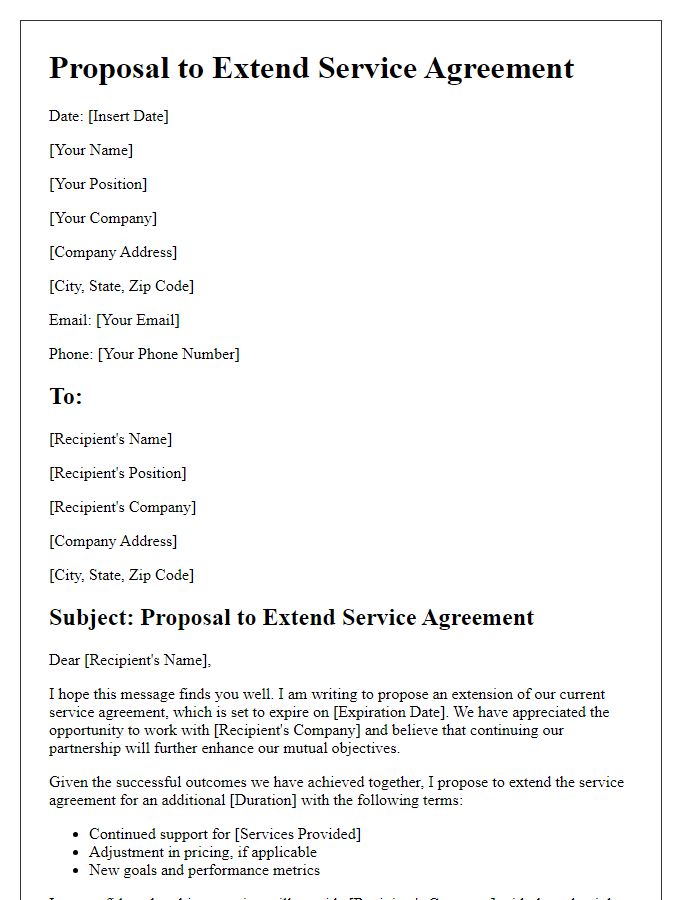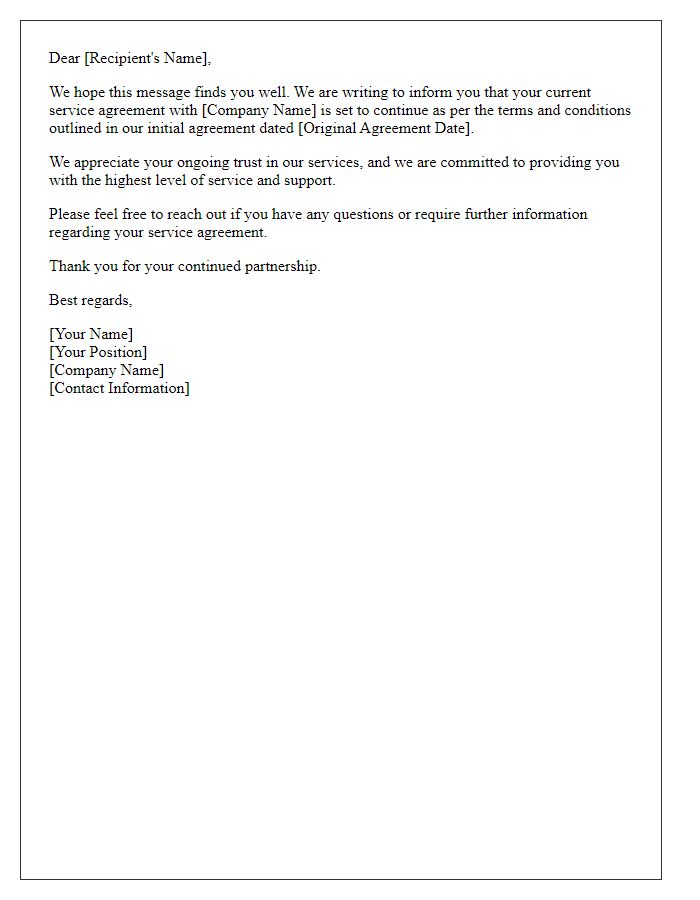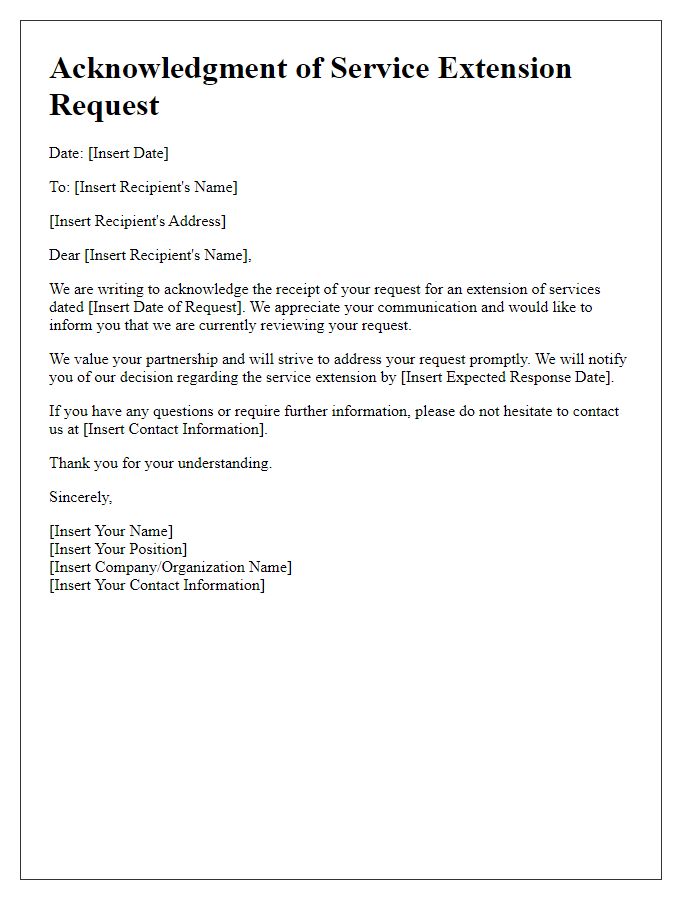Are you considering extending a service agreement but unsure how to articulate it? Drafting a letter for an extension can feel daunting, but it's an opportunity to reaffirm your commitment to a continued partnership. In this article, we'll explore essential tips and a simple template that makes the process seamless and effective. So, let's dive in and get you ready to communicate your intentions clearly!

Formal Header and Date
A service agreement extension provides an opportunity for parties engaged in a contract to prolong their collaboration under the existing terms or with revisions. Important details include the original agreement date, specifics regarding the parties involved (such as company names and legal representatives), and the new expiration date, which may extend the original term by months or years. Clear language regarding the scope of services, payment structures, and any adjustments ensures mutual understanding. Notable clauses may address performance expectations, confidentiality, and dispute resolution processes to uphold professionalism throughout the extended agreement.
Parties Involved and Agreement Details
The extension of a service agreement, originally established between Company A, located at 123 Business Park, Cityville, and Service Provider B, with headquarters at 456 Service Avenue, Townsville, is set to be executed. This agreement, initially signed on January 1, 2023, outlines comprehensive terms for the ongoing supply of IT support services, including system maintenance and troubleshooting. The parties have mutually agreed to extend this service agreement for an additional term of six months, through June 30, 2024, allowing uninterrupted delivery of critical services. Cost adjustments follow the agreed inflation rate of 3%, impacting the monthly service fee from $2,000 to $2,060. Both parties will reaffirm their commitment to adherence and compliance with the outlined terms during this extension period.
Original Agreement Reference
The extension of a service agreement signifies continued collaboration between parties, often involving a reference to the original agreement document, which outlines terms such as duration and scope. This reference usually includes a specific agreement number, known as the Original Agreement Reference, essential for maintaining a clear record of commitments made. Extending services may involve discussions about performance metrics, pricing adjustments, or amendments to conditions based on prior experiences. Ensuring all parties involved understand their roles and responsibilities is crucial for successful ongoing partnership, impacting business operations and service delivery. Clear documentation helps prevent misunderstandings and fosters a transparent relationship, beneficial for future negotiations.
Extension Terms and New Dates
Service agreements often require extensions due to various factors, such as changes in project scope or timelines. The extension terms typically specify the new duration of the agreement, including start and end dates. For instance, an initial service agreement set to expire on March 30, 2023, can be extended to July 30, 2023, indicating a clear three-month extension. Parties involved should also outline any modifications to responsibilities, deliverables, or payment terms that may arise during the extended period, ensuring clarity and mutual understanding. Additionally, a review of performance metrics from the initial agreement can help inform decisions about continued collaboration and adjustments in service provisions.
Signatures and Contact Information
A service agreement extension solidifies an existing contract between two parties, ensuring continuity and adherence to terms. Key elements include signatures from authorized representatives of both entities, validating the extension. Contact information, comprising full names, job titles, phone numbers, and email addresses, must be clearly documented for effective communication. Accurate details ensure seamless coordination in case of disputes, clarifications, or further negotiations. This structured approach fosters transparency and reinforces the professional relationship between the service provider and the client.













Comments